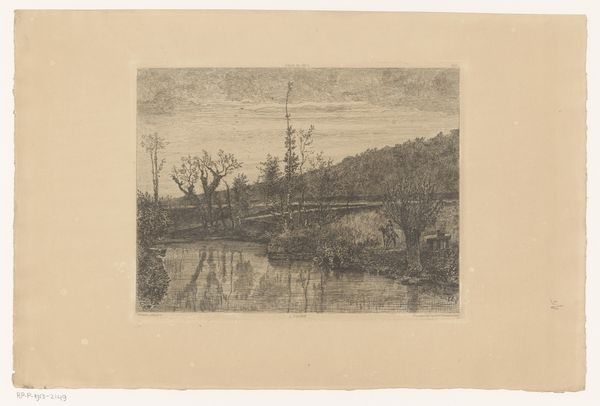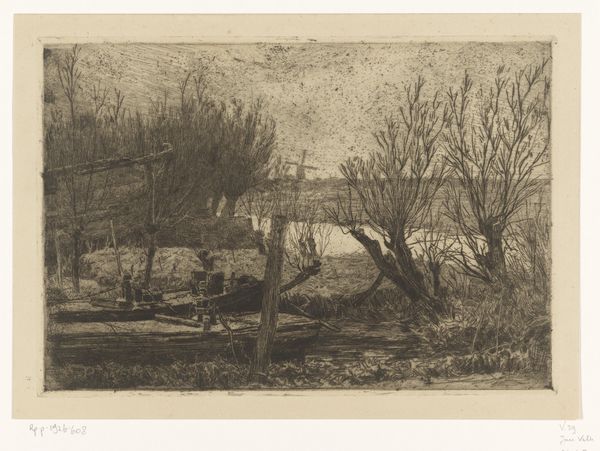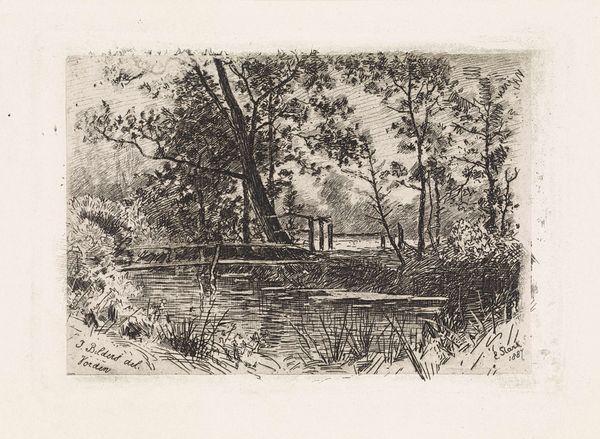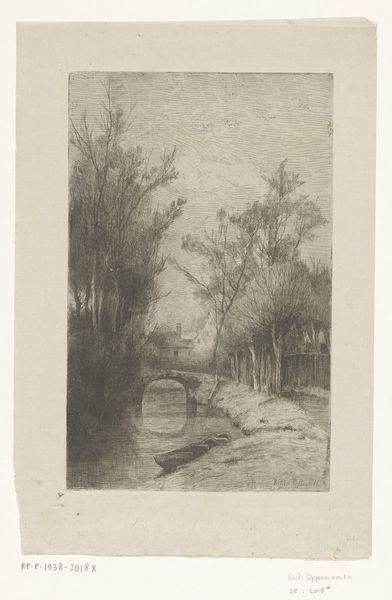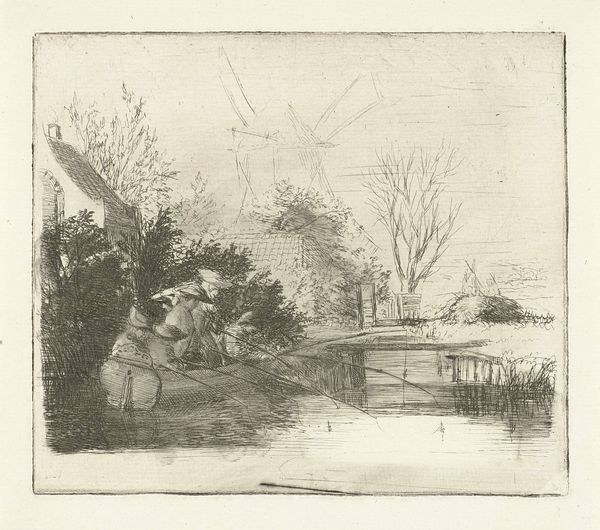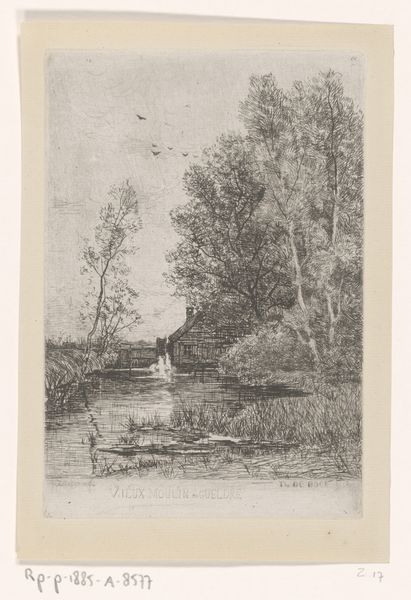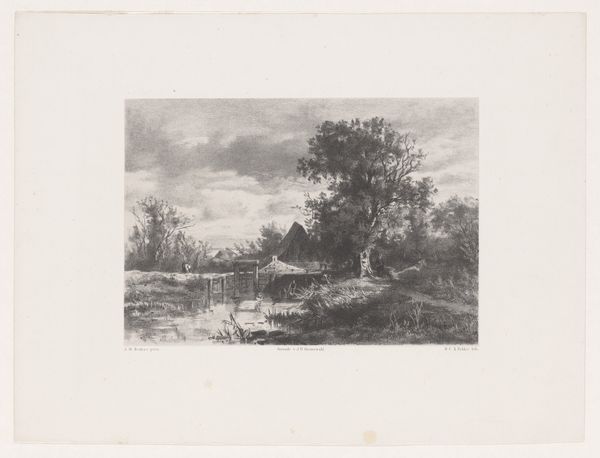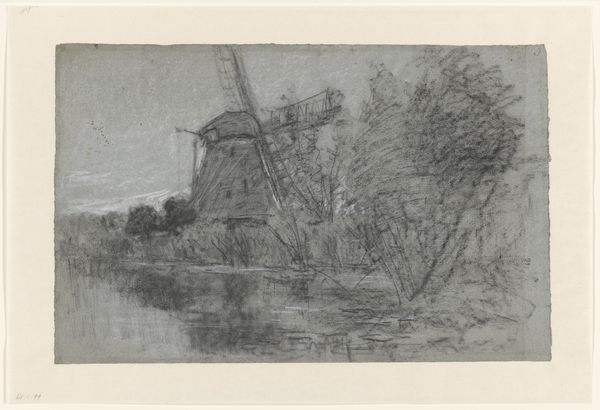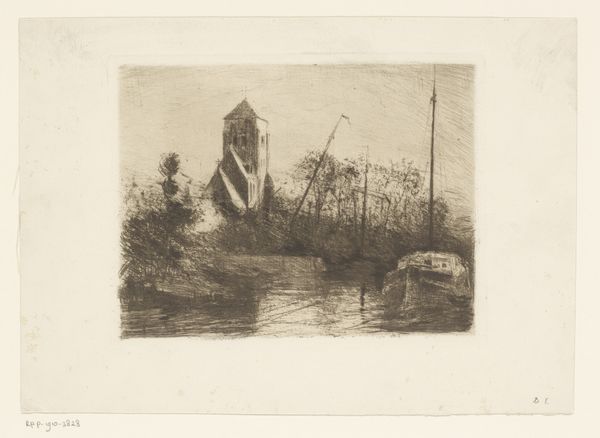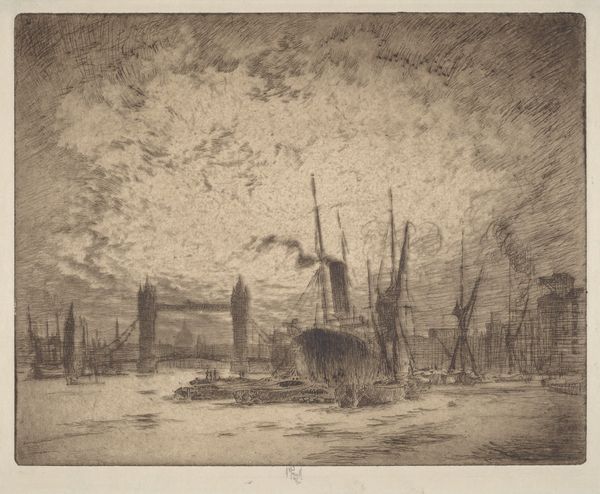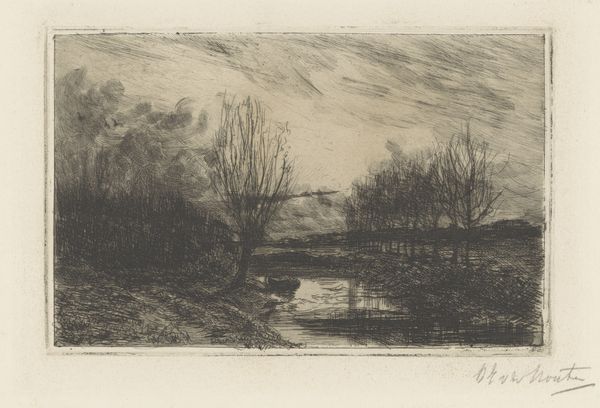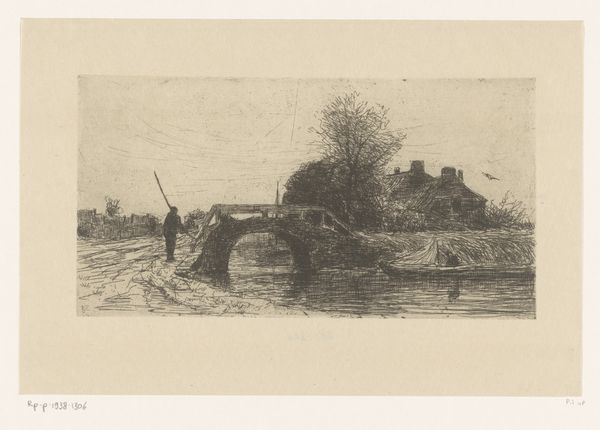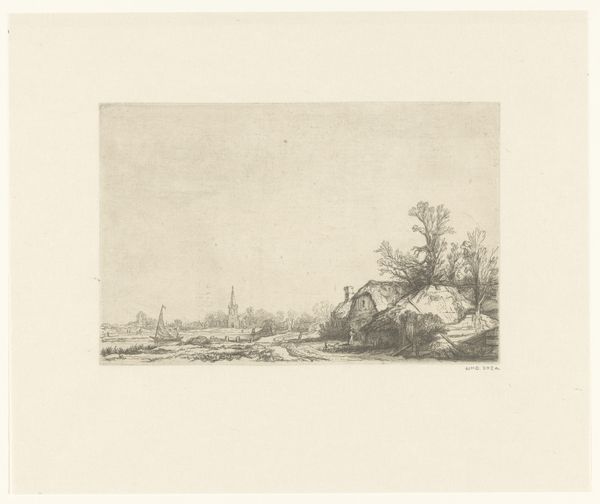
print, etching
#
pencil drawn
#
aged paper
# print
#
etching
#
landscape
#
realism
Dimensions: height 240 mm, width 314 mm
Copyright: Rijks Museum: Open Domain
Editor: This etching, "Wrakken in een polderlandschap," by Jan Veth from 1886, is really striking. There's something very melancholic about the image, a feeling of decay hanging in the air. What images or symbols jump out at you? Curator: The wrecks themselves are potent symbols, aren’t they? Think of the historical weight ships carry - exploration, trade, and often conflict. Here, stranded in the polder, they represent ambition thwarted, journeys ended. What resonates most is how they become part of the landscape, decaying slowly; we perceive the triumph of nature over human endeavors. Does the contrast in texture speak to you at all? Editor: Yes, definitely. The water looks so turbulent in places, but then the wrecks are quite still. Curator: Exactly! The water, the element of change, is almost violently present. It’s not simply water. Symbolically, this could refer to the ceaseless flow of time which wears everything down in the material world, reducing proud achievements to broken vestiges of human desire. Doesn't the landscape offer the eye clear pathways or barriers? Editor: I see how those dark pillars seem to almost barricade the view, but I did not immediately read them as symbolically standing for barriers. Curator: Notice how our perception shifts once we notice the darker shapes along each side of the piece as a set of boundaries which the shipwreck failed to evade. Veth subtly implies we could be seeing more if our movement was not thwarted. Editor: That gives the whole scene a totally different feel! I came expecting something bleak, but understanding the symbols has helped me think about resilience too. Curator: I completely concur with your assessment that it’s about resilience as well as decline. A scene showing what was lost to be reborn into something novel from memory to monument to mother nature. We can see a continuous exchange, now, between humanity and time.
Comments
No comments
Be the first to comment and join the conversation on the ultimate creative platform.

